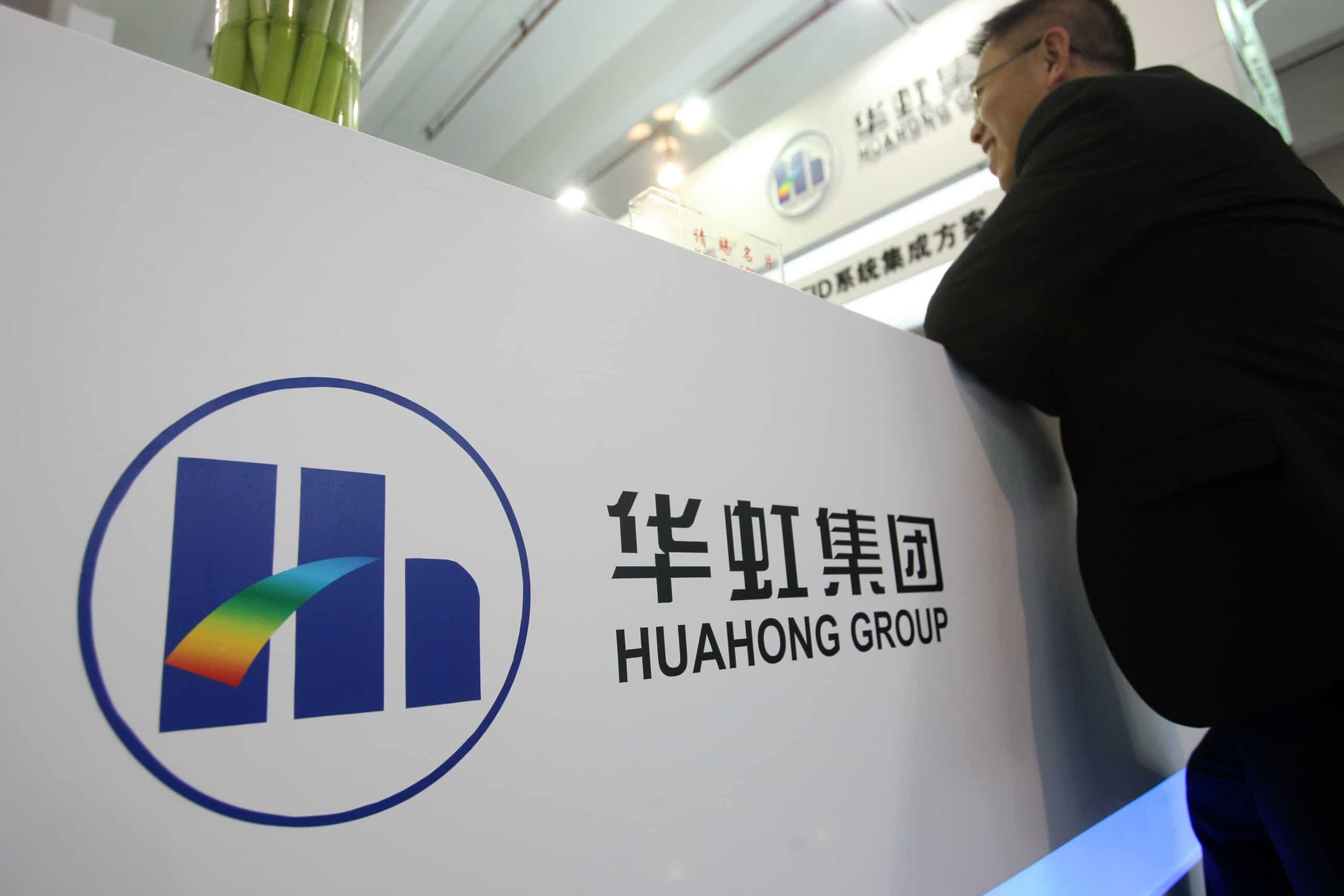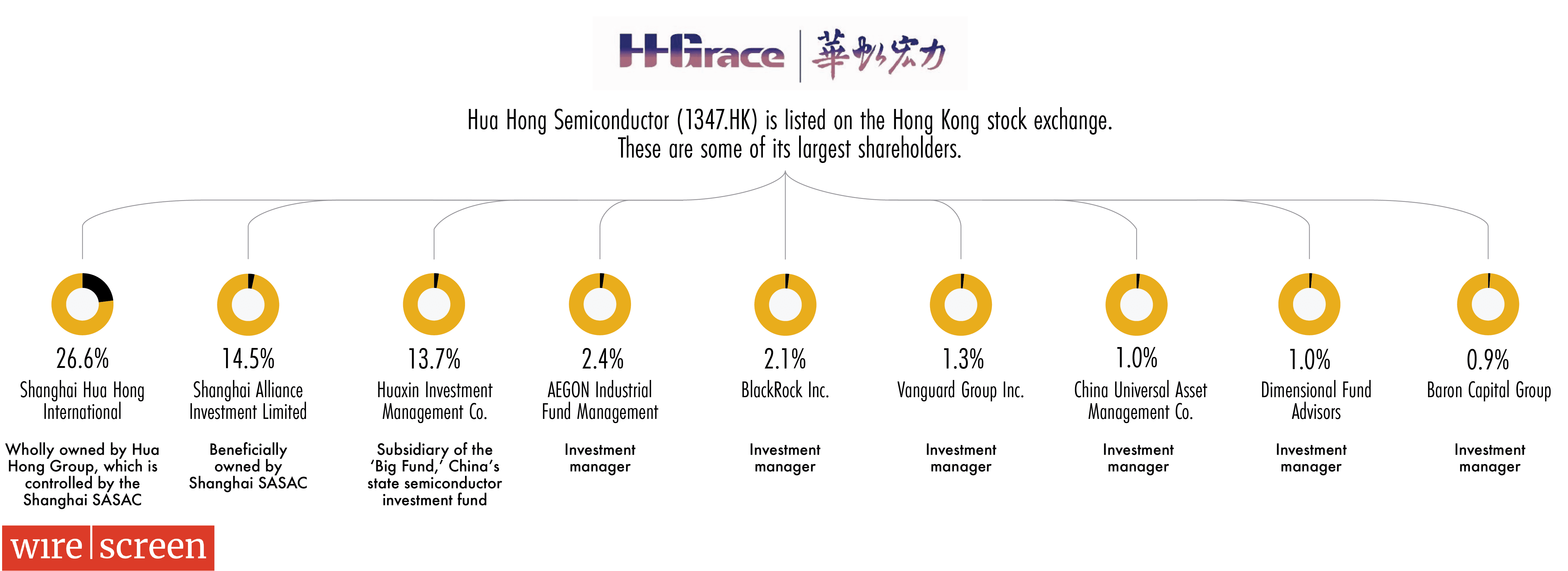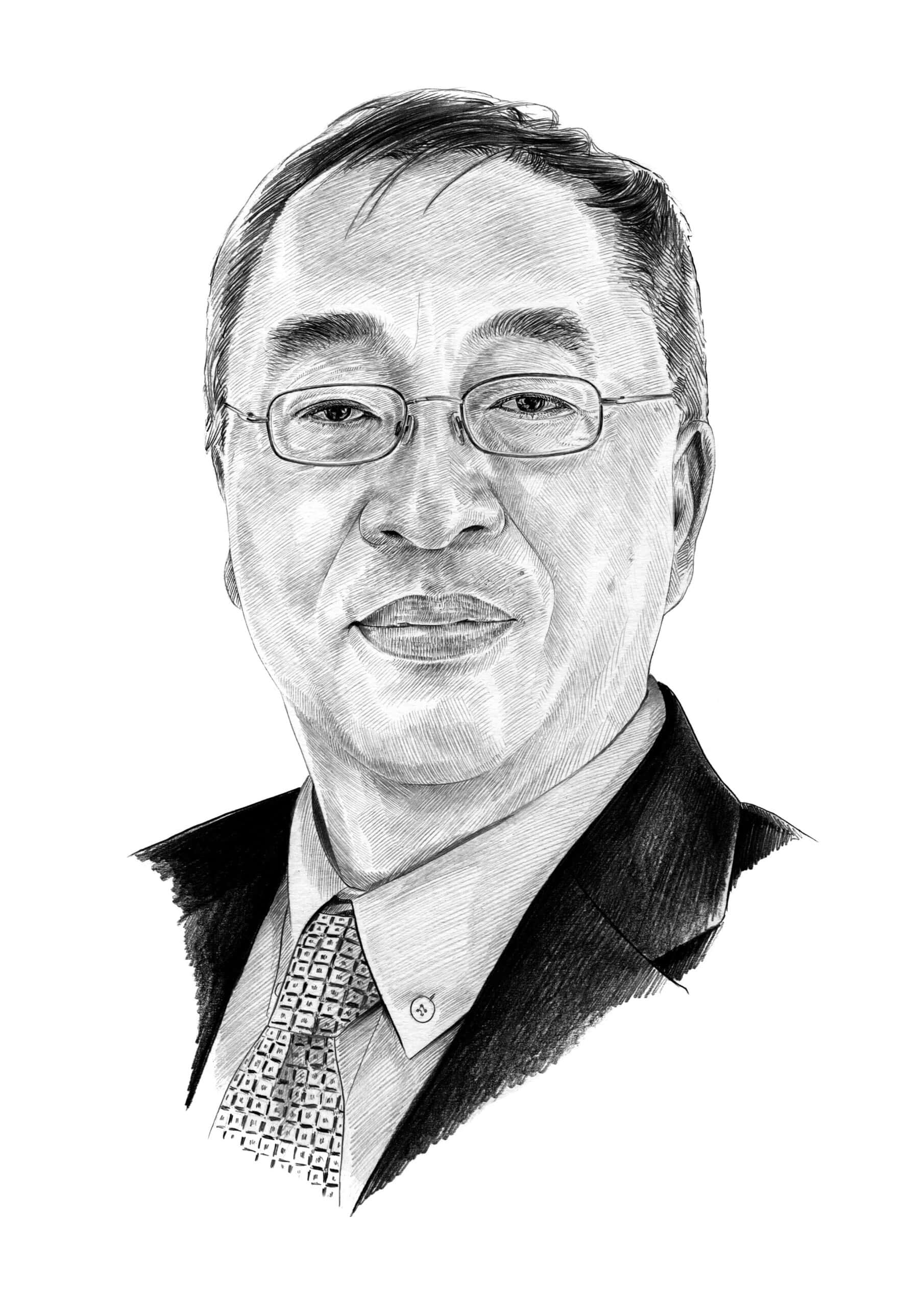
Business is booming at Hua Hong Semiconductor, China’s second largest chipmaker, even as tech export controls by Western countries present major headwinds to the industry.
The Shanghai-based chipmaker last week announced a plan to launch a $4 billion joint venture to expand its production lines amid strong demand for its chips. The company also has plans to raise $2.5 billion on the Shanghai STAR Market, which would be the third largest ever IPO on the city’s tech-focused bourse.

Hua Hong’s chip technology isn’t on the cutting edge: it lags behind industry leaders such as Taiwan’s TSMC and Korea’s Samsung. Nonetheless, it has carved out a profitable business making legacy chips for consumer electronics and automobiles. It also has some influential backers, including an investment firm linked to the family of China’s former top leader, Jiang Zemin, who died in late November.
This week, The Wire looks at Hua Hong Semiconductor: its long history, influential investors, and prospects competing against global chipmaking giants.
HISTORY
As one of China’s oldest chipmakers, Hua Hong Semiconductor’s origins pre-date its larger and more famous domestic competitor, Semiconductor Manufacturing International Corporation (SMIC).
The company is the product of a 2011 merger between two Chinese chipmakers, Hua Hong NEC Electronics Co. (HHNEC) and Grace Semiconductor Manufacturing Corporation (GSMC).
HHNEC was founded in 1997 as a joint venture between Hua Hong Group — a majority state-owned enterprise controlled by China Electronics Corporation (CEC) and INESA Group — and Japan’s NEC, at the time one of the world’s top three largest semiconductor producers. It spent its first few years developing and producing DRAM memory chips for computers, before pivoting in 2003 to foundry services.
Foundries are semiconductor firms which serve as third party manufacturers, specializing in physical production in order to allow other chipmakers to concentrate on research and design, a model pioneered by Taiwan’s TSMC.

GSMC was founded later, in 2001, but to great fanfare and controversy. It was established in Shanghai as a $1.63 billion joint venture between Jiang Mianheng, son of Jiang Zemin, then China’s president, and Winston Wang, son of Wang Yung-ching, a powerful Taiwanese industrialist.
Other notable figures linked to the firm included Neil Bush, brother of then-U.S. president George W. Bush, who had a $400,000-a-year consulting contract with GSMC, and Hong Kong property tycoon Li Ka-shing, who invested $90 million in the company in 2004.
Both of Hua Hong’s origin companies struggled to expand in their early years: HHNEC was constrained by its Japanese partner’s reluctance to turn over key technology, while GSMC struggled to acquire customers and turn a profit. Local competitor SMIC beat its rivals to IPO first on the New York Stock Exchange in 2004. A lackluster market response to SMIC’s listing stymied GSMC’s hopes of listing the following year, resulting in an exodus of talent to rival semiconductor firms.
In the late 2000s Jiang Mianheng’s investment firm, Shanghai Alliance Investment Limited (SAIL) brought both GSMC and HHNEC under its control. When HHNEC and GSMC later merged to form Hua Hong Semiconductor in 2011, SAIL became its largest shareholder, with a 46.4 percent stake just prior to its 2014 IPO.

SAIL has drawn down its stake in Hua Hong since the 2014 listing: It is now the second largest shareholder after the Shanghai government. Other major shareholders include a subsidiary of the Big Fund, China’s national semiconductor investment fund, which is a partner in the new $4 billion joint venture to build a new production line in the city of Wuxi.
LEGACY TECHNOLOGY
Hua Hong may be China’s second largest chipmaker, but mainland Chinese semiconductor firms remain small players on the global market. The foundry market is dominated by TSMC, with a 53.4 percent market share; Hua Hong ranks sixth with a two percent share.
| Foundry Market Share | |
|---|---|
| TSMC | 53% |
| Samsung | 18% |
| UMC | 7% |
| Global Foundries | 6% |
| SMIC | 5% |
| Hua Hong | 2% |
Data: TrendForce
The company’s technology also lags significantly behind the market’s leaders. More than half of Hua Hong’s revenue comes from sales of chips with nodes of 150 nanometers (nm) and above; top foundries such as TSMC and Samsung are these days competing to produce far more sophisticated chips with nodes of 5nm and below.
Yet even as semiconductors get more advanced, there remains a large market for basic but reliable legacy chips. Hua Hong specializes in chips found in smart cards, smart home appliances and automotive electronics — sectors which have experienced strong growth in recent years, particularly amid China’s electric vehicle boom. In a sign of how strong demand is for its chips, Hua Hong’s fabs are running at 111 percent of their designed capacity, according to recent financial reports.
In 2021, Hua Hong posted a record annual profit before tax of $296 million. The company is on track to beat those figures this year, with revenue in the first three quarters having already overtaken total annual revenue in 2021. Over 70 percent of its revenue comes from China, followed by the United States, which accounts for 12.8 percent. The U.S. was the region with the largest reported year-on-year sales growth in the third quarter of 2022.
NEW INVESTMENTS
70 percent of the proceeds from Hua Hong’s second listing will go to building a new production line in the city of Wuxi, a major Chinese semiconductor hub located on the coast, according to the company’s prospectus. Remaining capital raised will go towards upgrading the company’s existing plants.
But Beijing is pushing local chipmakers to accelerate their technological advancements, amid its drive for greater semiconductor self-sufficiency. Hua Hong says it is developing advanced 14nm chips, a technology which rival SMIC has already commercialized.
Unless Hua Hong comes out with a detailed plan for getting around the U.S. export controls, I am skeptical that this [14nm plan] is a serious strategy.
Douglas Fuller, from the Copenhagen Business School
Given its current focus on producing chips at a node size much larger, it seems unlikely that Hua Hong will manage to bring such advanced technology to market anytime soon. New export controls announced by the Biden administration are also likely to make it difficult for Hua Hong to procure the equipment necessary for a more advanced production line.
“Hua Hong never really showed much capability to be a fast follower. So in terms of sustainability, lagging behind the technological frontier and maintaining this more mature node capacity is a smart plan,” says Douglas Fuller, an associate professor at Copenhagen Business School and an expert on China’s semiconductor industry.
“Unless Hua Hong comes out with a detailed plan for getting around the U.S. export controls, I am skeptical that this [14nm plan] is a serious strategy.”

Eliot Chen is a Toronto-based staff writer at The Wire. Previously, he was a researcher at the Center for Strategic and International Studies’ Human Rights Initiative and MacroPolo. @eliotcxchen



